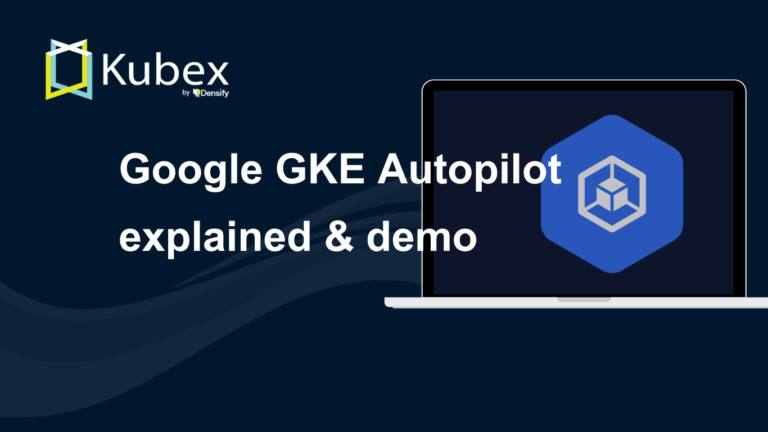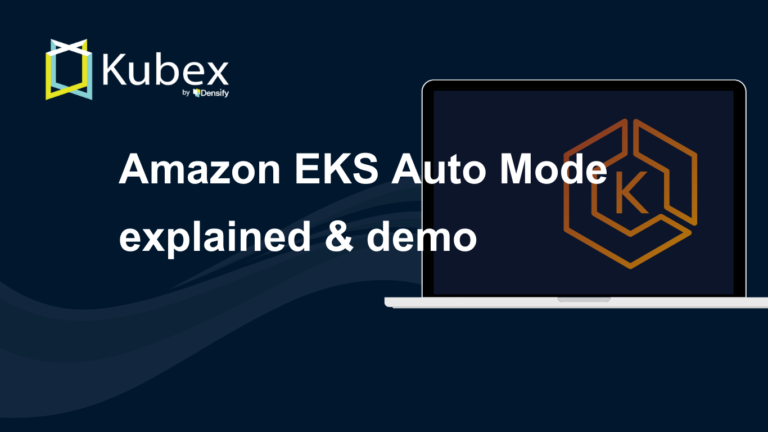Guide to Kubernetes
Introduction- Introduction: Guide to Kubernetes
- Chapter 1: Managing Kubernetes Resource Limits
- Chapter 2: Use Terraform to Provision AWS EKS. Learn Why & How.
- Chapter 3: EKS vs GKE vs AKS: An In-Depth Comparison
- Chapter 4: The Guide to Helm & EKS
- Chapter 5: Kubernetes kOps
- Chapter 6: Kubernetes Best Practices
- Chapter 7: Kustomize Tutorial
- Chapter 8: How to Deploy a K8s Cluster Using Kubespray
- Chapter 9: Guide To Kube-State-Metrics
- Chapter 10: Kubeadm Tutorial
Here at Densify, we are getting more and more questions about Kubernetes, containers and related management challenges. This ten-part guide is dedicated to addressing some of the most common questions we receive as an in-depth article series, so that Kubernetes administrators and architects may benefit from our experience. We are also providing a form at the bottom of this page, so that our readers can submit topic suggestions for future articles.
What is Kubernetes?
Originally released by Google on July 10, 2015 as a version 1.0, Kubernetes provides a “platform for automating deployment, scaling, and operations of application containers across clusters of hosts” (source). The open source Kubernetes project (sometimes abbreviated as K8s) is now overseen by the Cloud Native Computing Foundation (CNCF), which is in turn part of the Linux Foundation. In its June 2020 survey of 1,324 respondents, CNCF found that 83% of those surveyed use Kubernetes, up from 58% in 2018.
Spend less time optimizing Kubernetes Resources. Rely on AI-powered Kubex - an automated Kubernetes optimization platform
Free 60-day Trial
Kubernetes Tools & Best Practices
The typical questions that we receive can be generally categorized into two groups:
- Tooling
- Best Practices
Spend less time optimizing Kubernetes Resources. Rely on AI-powered Kubex - an automated Kubernetes optimization platform
Free 60-day Trial
Spend less time optimizing Kubernetes Resources. Rely on AI-powered Kubex - an automated Kubernetes optimization platform
Free 60-day TrialThe tooling questions are usually related to free and open source versions of popular associated tooling used in the industry. One common area of difficulty our customers face is in understanding the functional overlap or coverage between tooling options. For example, Terraform may be used to provision a cluster on AWS EKS, however some users ask whether they could or should also use eksctl, kubectl, CloudFormation, or kOps.
The chapters in this Kubernetes guide will address these challenges and more, including a walkthrough of core Kubernetes concepts and best practices.
Spend less time optimizing Kubernetes Resources. Rely on AI-powered Kubex - an automated Kubernetes optimization platform
Free 60-day Trial
The Chapters
Chapter 1: Use Terraform to provision AWS EKS
Are you considering using Terraform and AWS EKS together? Compare alternatives, follow the setup instructions, and read the best practices.
Chapter 2: Hosted Kubernetes
Find out the advantages of using a hosting provider, review the key features offered by AWS, Azure and Google, and compare their pricing.
Chapter 3: Use Helm to Deploy Applications on AWS EKS
Do you want to install applications on AWS EKS using Helm? Receive detailed instructions, and learn about its challenges and best practices.
Chapter 4: Kubernetes kOps Tutorial
Learn the benefits of kOps and how to install and use it to manage clusters hosted on a public cloud platform.
Chapter 5: 10 Kubernetes Best Practices to Know
Learn how to scale your Kubernetes clusters the right way.
Chapter 6: Kustomize Tutorial
Learn how to implement and use Kustomize by receiving step by step instructions and examples.
Chapter 7: How to Deploy a K8s Cluster Using Kubespray
Learn how to deploy Kubernetes clusters using Kubespray, an open-source deployment tool.
Chapter 8: The Guide To Kube-State-Metrics
Learn how kube-state-metrics complements Metrics Server, understand the metrics, learn how to install, read about the best practices and common pitfalls.
Chapter 9: Kubeadm Tutorial
Learn how to build Kubernetes clusters with kubeadm, compare it to kOps and Kubespray, and get installation instructions along with best practices.
Instant access to Sandbox
Experience automated Kubernetes resource optimization in action with preloaded demo data.




